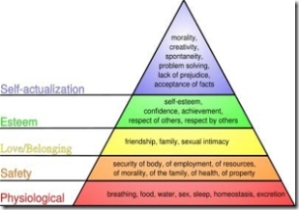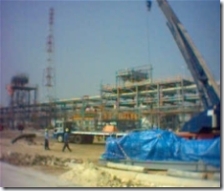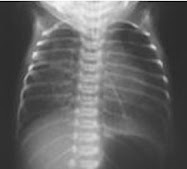Monday, December 15, 2008
VOMITING
At least after death you're not nauseous. (Woody Allen in Sleeper)
Vomiting is the forceful expulsion of contents of the stomach and often, the proximal small intestine. It is a manifestation of a large number of conditions, many of which are not primary disorders of the gastrointestinal tract.
Regardless of cause, vomiting can have serious consequences, including acid-base derangments, volume and electrolyte depletion, malnutrition and aspiration pneumonia.
The Act of Vomiting
Vomiting is usually experienced as the finale in a series of three events, which everyone reading this has experienced:
* Nausea is an unpleasant and difficult to describe psychic experience in humans and probably animals. Physiologically, nausea is typically associated with decreased gastric motility and increased tone in the small intestine. Additionally, there is often reverse peristalsis in the proximal small intestine.
* Retching ("dry heaves") refers to spasmodic respiratory movements conducted with a closed glottis. While this is occurring, the antrum of the stomach contracts and the fundus and cardia relax. Studies with cats have shown that during retching there is repeated herniation of the abdominal esophagus and cardia into the thoracic cavity due to the negative pressure engendered by inspiratory efforts with a closed glottis.
* Emesis or vomition is when gastric and often small intestinal contents are propelled up to and out of the mouth.
It results from a highly coordinated series of events that could be described as the following series of steps (don't practice these in public):
o A deep breath is taken, the glottis is closed and the larynx is raised to open the upper esophageal sphincter. Also, the soft palate is elevated to close off the posterior nares.
o The diaphragm is contracted sharply downward to create negative pressure in the thorax, which facilitates opening of the esophagus and distal esophageal sphincter.
o Simultaneously with downward movement of the diaphragm, the muscles of the abdominal walls are vigorously contracted, squeezing the stomach and thus elevating intragastric pressure. With the pylorus closed and the esophagus relatively open, the route of exit is clear.
The series of events described seems to be typical for humans and many animals, but is not inevitable. Vomition occasionally occurs abruptly and in the absense of premonitory signs - this situation is often referred to as projectile vomiting. A common cause of projectile vomiting is gastric outlet obstruction, often a result of the ingestion of foreign bodies.
An activity related to but clearly distinct from vomiting is regurgitation, which is the passive expulsion of ingested material out of the mouth - this often occurs even before the ingesta has reached the stomach and is usually a result of esophageal disease. Regurgitation also is a normal component of digestion in ruminants.
There is also considerable variability among species in the propensity for vomition. Rats reportedly do not vomit. Cattle and horses vomit rarely - this is usually an ominous sign and most frequently a result of acute gastric distension. Carnivores such as dogs and cats vomit frequently, often in response to such trivial stimuli as finding themselves on a clean carpet. Humans fall between these extremes, and interestingly, rare individuals have been identified that seem to be incapable of vomiting due to congenital abnormalities in the vomition centers of the brainstem.
Control of Vomition
The complex, almost sterotypical set of activities that culminate in vomiting suggest that control is central, which indeed has been shown to be true.
Within the brainstem are two anatomically and functionally distinct units that control vomiting:
Bilateral vomition centers in the reticular formation of the medulla integrate signals from a large number of outlying sources and their excitement is ultimately what triggers vomition.
Electric stimulation of these centers induces vomiting, while destruction of the vomition centers renders animals very resistant to emetic drugs. The vomition centers receive afferent signals from at least four major sources:
* The chemoreceptor trigger zone (see below)
* Visceral afferents from the gastrointestinal tract (vagus or sympathetic nerves) - these signals inform the brain of such conditions as gastrointestinal distention (a very potent stimulus for vomition) and mucosal irritation.
* Visceral afferents from outside the gastrointestinal tract - this includes signals from bile ducts, peritoneum, heart and a variety of other organs. These inputs to the vomition center help explain how, for example, a stone in the common bile duct can result in vomiting.
* Afferents from extramedullary centers in the brain - it is clear that certain psychic stimuli (odors, fear), vestibular disturbances (motion sickness) and cerebral trauma can result in vomition.
The chemoreceptor trigger zone is a bilateral set of centers in the brainstem lying under the floor of the fourth ventricle. Electrical stimulation of these centers does not induce vomiting, but application of emetic drugs does - if and only if the vomition centers are intact. The chemoreceptor trigger zones function as emetic chemoreceptors for the vomition centers - chemical abnormalities in the body (e.g. emetic drugs, uremia, hypoxia and diabetic ketoacidosis) are sensed by these centers, which then send excitatory signs to the vomition centers. Many of the antiemetic drugs act at the level of the chemoreceptor trigger zone.
To summarize, two basic sets of pathways - one neural and one humoral - lead to activation of centers in the brain that initiate and control vomition. Think of the vomition centers as commander in chief of vomition, who makes the ultimate decision. This decision is based on input from a battery of advisors, among whom the chemoreceptor trigger zone has considerable influence. This straighforward picture is almost certainly oversimplified and flawed in some details, but helps to explain much of the physiology and pharmacology of vomition.
Causes and Consequences of Vomiting
The myriad causes of vomiting are left as an exercise - come up with a list based on personal experience and your understanding of the control of vomition. An important point, however, is that many cases of vomiting are due to diseases outside of the gastrointestinal tract.
Simple vomiting rarely causes problems, but on occasion, can lead to such serious consequences as aspiration pneumonia. Additionally, severe or repetitive vomition results in disturbances in acid-base balance, dehydration and electrolyte depletion. In such cases, the goal is to rapidly establish a definitive diagnosis of the underlying disease so that specific therapy can be instituted. This is often not easy and in many cases, it is advantageous to administer antiemetic drugs in order to suppress vomition and reduce its sequelae.
DIZZINESS
Dizziness is a common description for many different feelings. The feeling of dizziness may be very familiar to you, yet difficult to describe.
Vertigo is a medical term to describe the feeling of spinning, whirling, or motion either of yourself or your surroundings. This is the same feeling you might have after getting off a merry-go-round or spinning in place. Several diseases of the balance organs of the inner ear can cause vertigo, or it may be a symptom of a tumor or stroke.
* Dizziness may be just mildly annoying or caused by something possibly life threatening.
* When you might feel dizziness
o Fainting or near fainting such as "at the sight of blood" or with emotional upset
o Fainting or near fainting from standing up too quickly or standing still too long
o Weakness during a flu, cold, or other illness
o Seasickness or motion sickness
o Queasiness, nausea, or vomiting
o Confused thinking
o Fatigue, tiredness, or daytime sleepiness
o Clumsy hands or stumbling walking
CHEST PAINS AND HEART ATTACKS
Noncardiac causes can include a pulmonary embolism, acid reflux and pinched nerves
Monday, December 15, 2008
Staten Island Advance
STATEN ISLAND, N.Y.
-- During the last week, I had a number of patients with the same complaint --
they feared that they were having a heart attack
because of pain in the lower chest. Happily, none did!
But the fear remained, as they asked,
"How can you be sure?" and "What else could it be?"
Interestingly, these are not completely separate questions and our job today will be to answer them.
Chest pain, like fancy chocolates, comes in many sizes and shapes, and just about every cause of chest pain has its own size and shape.
Heart attack, to answer the most important question first,
causes a tightness or pressure, sometimes fancifully described as if an elephant were standing on the chest.
It begins softly and increases in intensity over several minutes until it is extremely severe.
It lasts at least 15 minutes, and often for hours, and can travel from the central chest up to the jaw and down the left arm, where it is perceived as heaviness.
It is often associated with nausea and vomiting and preceded by no other symptom except, perhaps, unusual tiredness or exhaustion at the end of the day.
This constellation of symptoms is so uniquely characteristic that, in experienced hands, the electrocardiogram is used only to confirm the diagnosis and the blood test (for specific enzymes liberated by the damaged heart muscle) to measure the extent of the heart attack.
So, if it isn't a heart attack, what else can cause chest pain?
The answer is that every organ and structure in the chest can cause pain but each one has its individual mark.
The outside lining of the lungs can become inflamed as a complication of pneumonia in the disorder called "pleurisy."
In this case, sharp, knifelike pain accompanies deep breathing or coughing and is relieved by holding the breath.
This is associated with a fever, shortness of breath and sputum production --
a picture very different from heart attack.
Similarly, the outside lining of the heart can become inflamed in the disorder called "pericarditis."
The same knifelike pains occur in the left chest, particularly when leaning forward, and are not relieved by holding the breath.
This condition is usually preceded by a sore throat and fever and there is no shortness of breath or cough.
Another condition in which the pain mimics heart attack is pulmonary embolism, where a blood clot formed elsewhere in the body travels to the lungs and blocks the blood flow through the lungs.
While the pain is similar, the circumstances provide a clue to the diagnosis. The patients are acutely and severely short of breath and almost always have a recognizable site for the initial formation of a clot. It could be in the calf of the leg, which is painful and swollen, or surgery to the hip or pelvic organs in the preceding week.
Measurement of the oxygen content of the blood confirms the diagnosis and a radioactive lung scan visualizes the site of a clot or clots in the lung arteries.
AORTIC DISSECTION
Another, less common cause of chest pain is dissection of the aorta, where the combination of high blood pressure and the cholesterol plaques in the main artery out of the heart allow blood to strip the inner layer of the artery wall from the outer layer.
This serious condition can interfere with the blood flow to the arms and the brain, and is characterized by the very sudden and immediate severity of the central chest pain.
Patients can remember the exact moment the pain began,
as distinct from all the other pains described above, which begin imperceptibly and increase in intensity over time.
In this instance, the patient may give a story like this,
"I was drying the dishes and was just reaching for the salad bowl when the pain HIT me." or
"The phone rang and I was just lifting the receiver when the pain HIT."
And so on! Some people who experience acid reflux also have chest pain,
which is relieved by antacids.
Fractured ribs cause a sharp pain on breathing, characterized by tenderness over the fracture site, and usually a history of injury to the chest.
In the same manner, arthritis of the spine and nerve compression from ruptured disks in the neck produce characteristic pain patterns with specific associated symptoms,
which provides a unique diagnostic picture.
So when the patient has chest discomfort that does not fit the pattern of a heart attack and when the patient is sufficiently observant and articulate,
a confident and encouraging alternative diagnosis can be proposed without delay or a million-dollar work up.
The story tells it all.
Dr. Dennis Bloomfield is a cardiologist affiliated with Richmond University Medical Center and is president of the Staten Island Heart Society. He is a monthly contributor, along with the Richmond County Medical Society, to this column.
Wednesday, December 3, 2008
Aman Ketika Bekerja
 I. Kenapa manusia bekerja?
I. Kenapa manusia bekerja?MOTTO :
“..dan bahwasanya seorang manusia tiada memperoleh selain apa yang telah diusahakannya. Dan bahwasanya usahanya itu kelak akan diperlihatkan (kepadanya). Kemudian akan diberi balasan kepadanya dengan balasan yang paling sempurna, dan bahwasanya kepada Tuhanmu-lah kesudahan (segala sesuatu), dan bahwasanya Dia-lah yang menjadikan orang tertawa dan menangis, dan bahwasanya Dialah yang mematikan dan menghidupkan..” (Q.S An-Najm 53:39-44)
Dalam Fisika, KERJA (W)dirumuskan sebagai besarnya GAYA (F) yang dikenakan dalam suatu objek dikalikan dengan GERAK (S) objek tersebut pada arah gaya yang bekerja.
W= F x S
Apabila GAYA=0 dan atau GERAK=0, maka KERJA=0. Intinya: “TIDAK ADA KERJA TANPA HASIL YANG NYATA”.
Pada tingkat sosial, pekerjaan telah menjadi status yang amat penting.
Pengangguran dianggap sebagai penyakit masyarakat dan merupakan cela yang harus dikoreksi dalam suatu sistem ekonomi.
Pekerjaan bahkan telah menjadi identitas pribadi yang lebih penting daripada identitas psikis dan spiritual seseorang.
 Abraham Maslow, dalam teori Hierarchy Of Needs (Piramida Kebutuhan)-nya, menjelaskan bahwa pada dasarnya manusia memiliki 5 kebutuhan dasar dalam hidup meliputi:
Abraham Maslow, dalam teori Hierarchy Of Needs (Piramida Kebutuhan)-nya, menjelaskan bahwa pada dasarnya manusia memiliki 5 kebutuhan dasar dalam hidup meliputi:
- Kebutuhan Fisiologis.
- Kebutuhan Keamanan.
- Kebutuhan untuk Dicintai.
- Kebutuhan untuk Dihargai,dan
- Kebutuhan untuk Aktualisasi Diri.
Kebutuhan Fisiologis :Breathing, food, wate, sleep, homeostasis, excretion.
Safety : security of body, of employment, of resources, of morality, of the family, of health, of property.
Love and belonging : friendship, family, sexual intimacy.
Esteem : self-esteem, confidence, achievement, respect of others, respect by others.
Self Actualization : morality, creativity, spontanity, problem solving, lack of prejudice, accepting of facts.
Semua kebutuhan diatas juga merupakan motif manusia untuk bekerja.
—***—
II. Apa itu Etos Kerja?
Menurut kamus Websters (2003), Etos berarti guiding beliefs of a person, group or institution. Sedangkan menurut The New Oxford Dictionary (2005), the characteristic spirit of a culture, era, or community as manifested in its attitudes and aspirations.
Mengutip dari Jansen Sinamo dalam buku 8 ETOS KERJA PROFESIONAL (2005), etos kerja profesional adalah seperangkat perilaku kerja positif yang berakar pada kesadaran yang kental, keyakinan yang fundamental, disertai komitmen yang total pada paradigma kerja yang integral.
Kenapa harus memiliki etos kerja?
Pada dasarnya, manusia memiliki apa yang disebut gharizah (naluri) untuk mencapai suatu kenikmatan.
Tujuan bekerja sendiri pun dalam rangka mencapai kebutuhan akan kenikmatan sesuai piramida Maslow diatas.
Namun dalam rangka pencapaian tujuan tersebut terkadang manusia melakukan hal-hal yang bertentangan dengan agama, moral & hukum disaat bekerja, inilah cikal bakal hancurnya perekonomian Indonesia yang mencapai puncaknya saat krisis moneter 1998 lalu dengan trias Korupsi,Kolusi,& Nepotisme (KKN).
 Fenomena ini telah dijelaskan oleh Sigmund Freud dalam teori Psikoanalisis-nya dengan trias Id,Ego,&SuperEgo.
Fenomena ini telah dijelaskan oleh Sigmund Freud dalam teori Psikoanalisis-nya dengan trias Id,Ego,&SuperEgo.
Id merupakan insting primitif alamiah manusia yang bertujuan untuk mencapai suatu kebutuhan akan kenikmatan.
Ego merupakan bakat kognitif manusia untuk menyusun rencana dalam rangka mendapatkan Id.
Sedangkan SuperEgo sendiri merupakan fase terakhir manusia untuk mempertimbangkan rencana-rencana tadi dengan tinjauan-tinjauan agama,moral, dan hukum yang berlaku sebelum melakukan tindakan psikomotorik untuk memperoleh Id.
Apabila Ego dan SuperEgo ini tidak terbentuk, maka manusia yang seperti ini dapat menjadi penderita Antisocial Personality Disorder (Gangguan Kepribadian Antisosial).
Lalu apa saja komponen-komponen Etos kerja itu? Ada delapan (8) komponen dalam etos kerja, komponen-komponen tersebut antara lain:
- KERJA ADALAH RAHMAT : “Aku Bekerja Tulus Penuh Syukur”.
- KERJA ADALAH AMANAH : “Aku Bekerja Benar Penuh Tanggung Jawab”.
- KERJA ADALAH PANGGILAN : “Aku Bekerja Tuntas Penuh Integritas”.
- KERJA ADALAH AKTUALISASI :”Aku Bekerja Keras Penuh Semangat”.
- KERJA ADALAH IBADAH : “Aku Bekerja Tulus Penuh Kecintaan”.
- KERJA ADALAH SENI : “Aku Bekerja Cerdas Penuh Kreativitas”.
- KERJA ADALAH KEHORMATAN : “Aku Bekerja Tekun Penuh Keunggulan”.
- KERJA ADALAH PELAYANAN:”Aku Bekerja Paripurna Penuh Kerendahan Hati”.
Diakhir Bab ini, sedikit ilustrasi dalam buku CULTURE MATTERS yang ditulis oleh Samuel Huntington (1997) tentang KOREA SELATAN & GHANA.
” Pada permulaan 1960-an data-data ekonomi Korea Selatan & Ghana nyaris sama, GNP kedua negara relatif tidak berbeda dan tingkat kesejahteraan rakyatnya juga hampir sama. Tetapi 30 tahun kemudian keadaan tersebut berubah drastis. Kondisi kedua negara berbeda bagai bumi dan langit. Korea Selatan berkembang menjadi raksasa industri, termasuk dalam 14 negara dengan pertumbuhan ekonomi tertinggi di duna, memiliki banyak perusahaan multinasional, eksportir otomotif, elektronik, dan produk-produk manufaktur lainnya, sedangkan Ghana tetap di tempat sebagai negara miskin.”
Satu-satunya alasan hal ini bisa terjadi adalah perbedaan budaya. Dengan kata lain ETOS, Etos yang tumbuh di Korea Selatan adalah KERJA KERAS, DISIPLIN, BERHEMAT, MENABUNG & MENGUTAMAKAN PENDIDIKAN.





